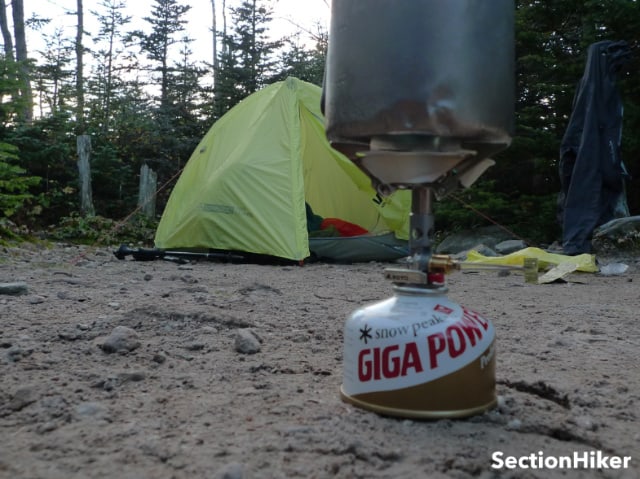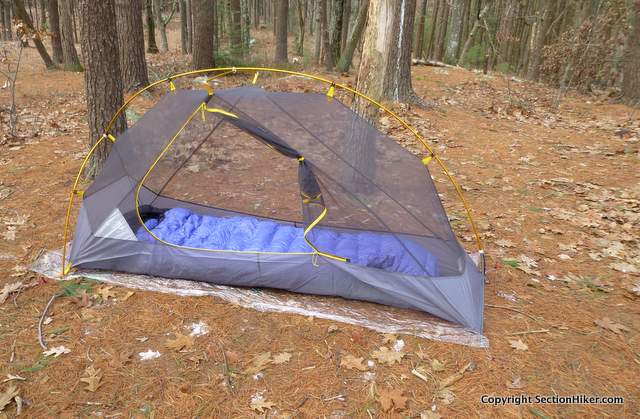
You’ve bought a tent with a waterproof floor. Do you need to buy a tent footprint or a groundsheet for it too? It depends on how durable your tent floor is, how waterproof it is, and what the surface conditions are like where you intend to use it. In order to decide, you’ll want to understand how the thickness of your tent floor and its waterproof rating impact its durability. Campsite selection is also an important factor. While there are times when a footprint is desirable, there are a number of lower-cost and lighter-weight footprint options that you can also use instead.
What is a Tent Footprint?
A tent footprint is a piece of protective fabric or material that you lay under your tent that provides a moisture barrier and protects your tent floor from abrasion and punctures. Every time you pitch a tent, the floor experiences some abrasion from the grit, tiny rocks, sand, and twigs that accumulate on preexisting tent sites. This weakens the fabric and can lead to a hole or puncture that can soak through the waterproof barrier of your tent floor. A tent footprint acts as a protective barrier under your tent, so it absorbs the damage and preserves your tent floor.
Most tent footprints are matched to a specific tent’s floor dimensions. For example, when you use a footprint, you don’t want it to be larger than your tent floor and reach out past the tent rainfly, because rain will accumulate and puddle along the edges. The puddle can soak through the tent floor fabric or leak in if your tent floor has a hole or deteriorating seam tape. If you’re using a tent footprint that is too large, it’s best to tuck the footprint edges under the edges of your tent, so rainwater draining off your tent’s rainfly can soak into the surrounding soil.
Tent Floor Durability and Waterproofing
Backpacking tent specs often include a denier count and a waterproofing metric. The denier count refers to the thickness of the threads that make up the tent’s floor fabric and is a good rough estimate of its durability. For example, a tent with a “40D” or “40 denier floor” like the REI Half Dome 2 Plus will be tougher and more durable than the floor of the ultralight Gossamer Gear “The Two” which has a 10 denier floor.
Tent floors also differ in how waterproof they are. For example, a tent floor with a waterproof rating of 5000 mm, such as the Hilleberg Niak, is much more waterproof than a tent like the Gossamer Gear “The Two,” whose floor is only rated at 1800 mm. The “mm” measurement, also referred to as “hydrostatic head”, measures the amount of pressure that’s required to make a fabric leak and provides you with a way to compare how waterproof tent floors are against one another.
In general, you’ll find that tents with lower deniers and waterproof ratings are more likely to need a footprint than those with higher deniers and waterproof ratings. But you’re also going to want to consider the character of the campsites you plan to set up your tent on and whether they warrant the use of a footprint.

Campsite Selection
Whether you need a tent footprint or not depends on where you camp. For example, many pre-existing campsites are “dished-out” and form an indentation in the soil where many people have slept previously. Gravel, grit, sand, and water collect in these dished-out areas and will wear down your tent floor if you camp on them frequently. If you only camp occasionally, the impact on your tent floor will be less severe. But if you have to camp in campgrounds or established campsites and you have a thinner, less waterproof floor, a footprint may be advisable.
If you camp frequently on wilder campsites that are not pre-established, whether you need a footprint will depend on the surface that you sleep on. If you camp on an earthen mossy forest floor that is well-drained and non-abrasive, and you clear away any sticks and pine cones beforehand, you probably don’t need a footprint. But if you camp on sandy soil or bare rock that’s more abrasive, a footprint may be advisable. I know that my caution level would increase if I had a tent that had a 20 denier floor or less and a waterproof rating below 1500 mm.
Cost and Weight of Tent Footprints
Tent footprints can be quite expensive and heavy and it’s disheartening when you realize you have to carry one even though you’ve spent a lot of time and money to buy a lightweight tent. Dropping another $50 for a simple piece of cheap fabric seems like a rip-off to me, in addition to the extra weight required to carry it, and the extra effort to clean and dry it between uses.
Alternative and Lower Cost Tent Footprints
When I carry a footprint, I bring a piece of very lightweight plastic sheeting that weighs between 1 and 2 oz, depending on the size of the tent I use. Gossamer Gear sells something called Polycryo Groundcloths for this purpose that I’ve used for years. The stuff is tough and doesn’t tear or wear though when used on sandy soil or gravel. You can reuse it over and over and it doesn’t require any extra care.

Window Wrap, the plastic covering that you blow-dry over your windows to insulate them in winter, is another cost-effective option. A single piece will last one season or longer depending on the frequency of use. The most popular brands are Duck Brand Window/Door Shrink Film and Frost King Stretch Window Kit. Both are inexpensive and can be cut up into multiple groundsheets
Finally, many people use Tyvek HomeWrap, which is a building material that is used to create a vapor barrier between your house’s interior walls and external siding to prevent drafts from blowing through. It’s lightweight, waterproof, and puncture-resistant, but it’s heavier than Polycryo or Window Wrap. Zpacks.com sells 5 x 9′ Tyvek sheets that you can also cut down to size. Its chief advantage is that it lasts forever.
Updated June 2023.
SectionHiker is reader-supported. We only make money if you purchase a product through our affiliate links. Help us continue to test and write unsponsored and independent gear reviews, beginner FAQs, and free hiking guides. SectionHiker.com Backpacking Gear Reviews and FAQs
SectionHiker.com Backpacking Gear Reviews and FAQs
Your breakdown of the advantages of a tent footprint is illuminating.